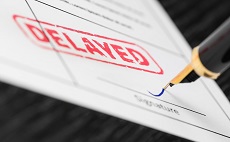
If you want a business, you have to place the needs of your customers and clients ahead of your own. That way, you can build customer loyalty and position yourself as an authority in your field. Today, with many people ordering products and services online, you are probably going to ship a bunch of orders to your customers. Therefore, you must do everything you can to make sure your orders get to your customers on time. If you can anticipate common reasons why your orders might get delayed, you could build them into your lead time, keeping your on-time delivery rate high. What are the most common reasons why orders get delayed?
Heavy Traffic on the Roads
One of the most common reasons why orders get delayed is heavy traffic on the roads. No matter how you ship your orders to your customers, they will eventually have to travel by ground to get to their final destinations. You must think carefully about the route your delivery drivers take. Take a look at the traffic patterns in your city and do everything you can to avoid heavily trafficked roads, particularly during rush hour. If you can plan for traffic ahead of time, you can reduce the number of delays that take place due to heavy traffic.
Vehicle Breakdown Issues
Another common reason why orders get delayed has to do with vehicles that break down on the road. You need to invest in reliable commercial transportation if you want your orders to get to your customers on time. If you have your own vehicles, you must take care of them. Even though you want to keep your overhead expenses low, you should invest in routine maintenance that can prevent breakdowns from happening. For example, make sure you get oil changes on time. This can reduce the frequency of engine issues. You should also rotate your tires regularly to get as many miles out of them as possible. This can reduce the frequency of flat tires.
Failed Delivery Attempts
Sometimes, orders get delayed due to failed delivery attacks. Even though you may be tempted to simply leave a package on the doorstep, you increase the chances of someone stealing that package. Therefore, you should coordinate with your customers to make sure someone is there to receive the package. That way, your orders do not get rejected and sent back to their origination points. If you have a lot of failed delivery attempts, take a look at why this is happening. Conduct a survey of your customers and see why they are not there to receive their packages.
Packages that Get Lost in Transit
There’s also a chance that packages could get lost in transit. If you have packages to get lost, this is going to impact your on-time order rate. One of the ways to prevent this from happening is to invest in RFID tracking stickers. If you invest in advanced inventory management practices, you will know where all of your packages are all the time. You can even set up an automation system that customers can access, allowing them to see exactly where their packages are located. This can reduce the frequency of order delays.
Technology Problems
Finally, technology problems can also lead to delays and orders. You have probably invested in a lot of systems to automate a lot of the tasks that you used to do by hand. Even though these tasks can save you a lot of time, they are not perfect. You should invest in software and hardware maintenance to make sure your programs are operating properly. That way, you can reduce the chances of technology impacting one of your orders. Work with technology professionals who can conduct an audit of your system from time to time. They will make sure that your technology systems are in good working order.
Keep Your Customers Happy by Delivering Orders on Time
In the end, there are numerous reasons why your orders might get delayed as they move from place to place. You must think about these issues ahead of time so that you can plan for them accordingly. You might even be able to prevent these issues from impacting your company. If You find that you have a high percentage of orders that are getting delayed, you may want to reach out to a professional who can take a look at your shipping practices. That way, you can make improvements in your operations and supply chain practices. This can go a long way toward keeping your customers happy.






